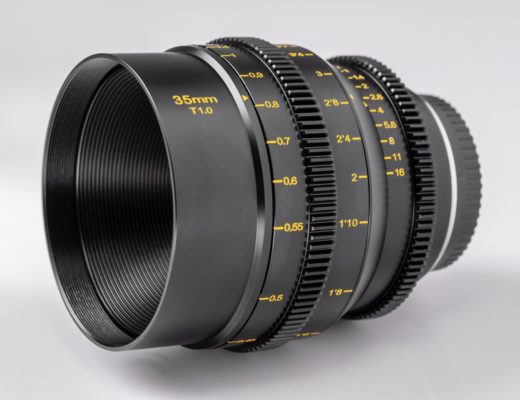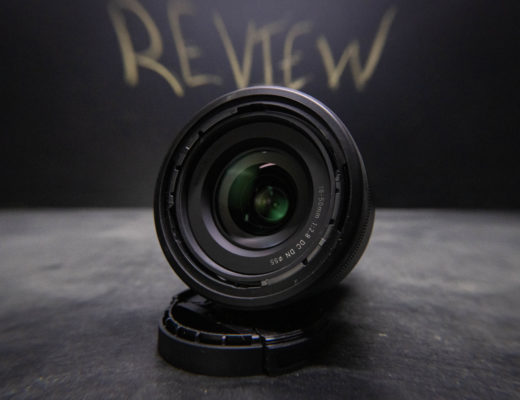
It doesn’t take long, during the formative years of most people’s involvement in film and TV, to conclude that it’s a good idea to travel light. Of course, by the time most people gain enough seniority to dictate the equipment manifest, it’s no longer their problem to carry it through the airport, up the mountain, or to push the magliners between unit base and location. For those of us who’re responsible for both cinematography and logistics, though, the idea of leaving things behind is tempered only by the terror of being left stranded without a crucial piece of gear.
Recent YouTube traffic, such as this example by DSLR Video Shooter, suggests an increasingly popular solution: take the same things, but make each of them smaller and lighter. Mr Shooter has figured out a way of doing that which immediately seems pretty persuasive. It’s based around the Sigma FP, and while it requires an external USB3-connected SSD to do its best work, if anyone is aware of a smaller, lighter way to achieve what this thing can achieve, please feel free to tell us about it in the comments.

All hail Mr Shooter
Let’s all do Mr Shooter a favour and watch his video for the details, but the capabilities are impressive: uncompressed 4K raw from a full-frame sensor in a medium-format sized package. The 3D-printed SSD caddy is ingenious, and it probably won’t be long before someone with a CNC mill and a copy of Solidworks turns out a commercial alternative. There’s a wide-angle prime and a clip-on mattebox, and a top handle for easy handling, plus a place to mount the (very necessary) onboard monitor. Since the L mount is so short and so wide, it will adapt to virtually any lens ever made.
Similar things could be done with many other cameras (the FP gives us a full frame sensor, but that’s not always the best idea). The benefits of things which are small and light don’t even end with size and weight. Small mirrorless cameras are unlikely to be enormously power hungry even when shooting video, at least compared to dedicated moving-image devices. Sure, the inbuilt power on most of them is not really specified for video shooting, but they sip so frugally at the electrons that slapping a big Sony camcorder pack on the back generally allows for lots and lots of endurance.
It might even seem upgradeable – after all, it’s modular – though this is the point at which a degree of caution becomes necessary. For instance, there are no inbuilt ND filters (could there ever be, on something mirrorless-sized?). Adding them would create a nuisance of circular, screw-in filters. A rotating variable ND is an attractive option, but then the minimum density of many polariser-based variable ND filters is a stop, compromising the prodigious sensitivity of many modern designs. Rotating filters would also complicate the lightweight, clip-on mattebox.

Small is only beautiful while it’s still small
Preserving the joy of this kind of tiny rig inevitably means a certain dedication to asceticism. Trying to fix things by adding accessories isn’t necessarily a good idea. Adding a rod-mounted mattbox would add considerable bulk just for a 15mm rod system, let alone the box itself, and those are just issues arising from ND filtering, let alone any consideration of focus servos, video links, radio mic receivers, timecode devices, and then the power to run them (particularly power-hungry transmitters).
So no, camera setups small enough to strap onto a muscular dormouse are not really ideal for people who demand all the refinements of a modern film set. With that in mind, it’s not difficult to look at the haphazard agglomeration of equipment and cables which seems to define the modern production camera and wonder whether every last nut, bolt and BNC is really necessary.
It’s also likely that even if we were to add every accessory we’ve mentioned, the result would still be smaller, lighter, faster to boot and less power-hungry than some of the world’s favourite cinema cameras are out of the box. The result can be a tiny, power-frugal, lightweight, inexpensive and hugely flexible cinema camera with capabilities which would have caused the average F900 user of fifteen years ago to gnaw off a limb in a fit of pique. Someone could probably shoot a major motion picture on a setup like this and nobody would bat an eyelid.
Similar things could be done with many other mirrorless cameras, at least one of which has the useful ability to shoot a generous 6K frame even to internal SD cards. Doing this with the FP is, as we’ve hinted, perhaps not the most obvious choice. Think for a moment about the sheer data load of shooting uncompressed 4K raw, or even high-rate 6K ProRes, on the sort of production that’s probably operating out of a couple of pelican cases in the back of someone’s car. At some point, though, having too much data really is a champagne problem.

Filmtools
Filmmakers go-to destination for pre-production, production & post production equipment!
Shop Now













